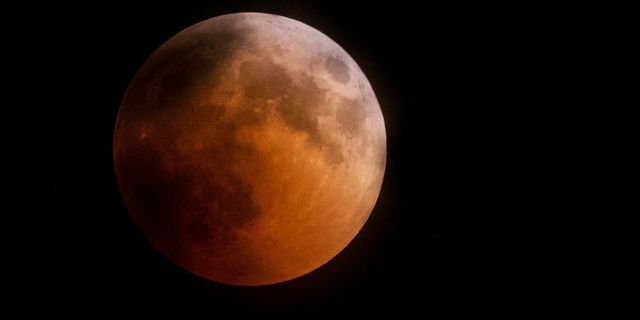Researchers of the US Air Force will develop a satellite for regular patrolling of the circumlunar space. This will expand the permanent presence of the United States up to the far side of the moon, writes Ars Technica. For the first time, the US military has begun expanding the operational zone in space.
This week, the US Air Force Research Laboratory posted a video on YouTube that did not attract much attention. But she made a rather important statement — the American armed forces plan to expand their capabilities to control the situation in space beyond the geostationary orbit - up to the Moon.
"Until now, the radius of the US space expeditions was 35.5 thousand kilometers above the Earth—" the narrator says in the video. — It was then, and it is the case now. The Air Force Research Laboratory increases this distance tenfold, and the US operational zone a thousandfold, expanding our access zone to the far side of the moon in circumlunar space."
The US military has talked about expanding its operational zone before, but now they are starting to act. He plans to launch a satellite into lunar space, probably equipped with a powerful telescope. As the video says, the satellite will be called ("Satellite for patrolling the circumlunar space" (Cislunar Highway Patrol System) or, as you guessed it, CHPS. The research laboratory plans to publish a "request for proposals for a conceptual design" of the CHPS satellite on March 21 and announce the conclusion of the contract in July. The CHPS development program will be led by Michael Lopez from the Laboratory's Spacecraft Department. (Alas, we supported the candidacy of Eric Estrada/Erik Estrada).
This program provides, in particular, participation in the work of several military organizations, and it may be a little difficult to monitor its implementation. But in general, the Air Force laboratory will monitor the development of the satellite. Then the US Space Forces will provide the possibility of using this satellite to the US Space Command, which is responsible for military operations in outer space. In fact, this satellite is the beginning of work to expand the area of operations of the US Space Command from geostationary space to the area beyond the moon.
"For them, this is the first step to being able to know what is happening in the near-lunar space, and then identify any potential threats to US activities—" says Brian Weeden, director of program planning at the Secure World Foundation.
According to Weeden, he thinks that the CHPS satellite will not be equipped with means of responding to any threats, but will primarily be used to monitor the situation.
So why is the US Space Command interested in expanding its theater of operations to include the Moon? The main reason mentioned in the video is to manage the increasingly intensive movement of spacecraft in lunar space, including several commercial missions sponsored by NASA, the Artemis Space Agency program and programs of other countries. The movement in this space will be very intense. The recent report Fly Me to the Moon ("Take Me to the Moon"), prepared by the Center for Strategic and International Studies, examines dozens of expeditions to the moon planned for the next decade.
With the help of the CHPS satellite and, presumably, subsequent missions, the US military seeks to ensure the "peaceful development" of near-lunar space and create a "safe and reliable" environment for research and commercial development.
Weeden believes that there is another strategic aspect to this new program. According to him, the military leadership is concerned about space objects launched into the lunar space by other countries, which then "lose sight of" the existing situation tracking systems focused on low Earth orbit and geostationary orbit.
Such objects, he said, could orbit the moon and potentially return and collide with a US military satellite in geostationary space.
"I think it's unlikely, but from a physics point of view it's possible and definitely will be the result of having a 'gap' in their current space control system," Weeden said. —In my opinion, they are much more concerned about this than about any real threats in the circumlunar space, since the United States currently has no military facilities in the circumlunar space."
Readers' comments:
Magog 14
No way. Leave your wars and armies on the Ground.
killerhurtalot
We need to keep an eye on these Chinese rovers on the surface of the moon, lol. They're definitely up to something bad.
NetMage
"Patrolling" seems more than an exaggeration. I won't say it's a clickbait, but it's certainly not very accurate. What they are discussing is more like an observation.
Oldmanalex
Thus, the threat will be identified in milliseconds, but it will take almost a second for information about it to be transmitted back to earth, and a week to push through the bureaucratic maze of the Pentagon. Really fast reaction!
GemmaOldman
Someone has to come up with a conspiracy theory about this. For example, Musk/Gates/Bezos built an embassy on the dark side of the moon so that they could meet with greys, Northerners and reptiles, and Space Forces were created to protect their embassy.
Probably, to really inspire this idea, it's worth adding something about masks or Hillary.
appliance
Some kind of nonsense. How about the armed forces take care of their veterans and provide soldiers with decent housing, instead of doing all sorts of nonsense?

